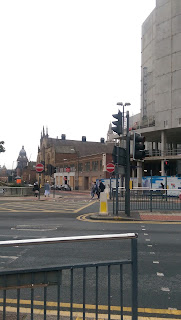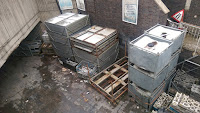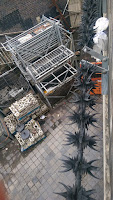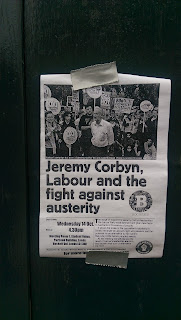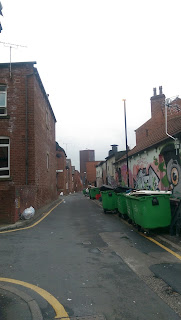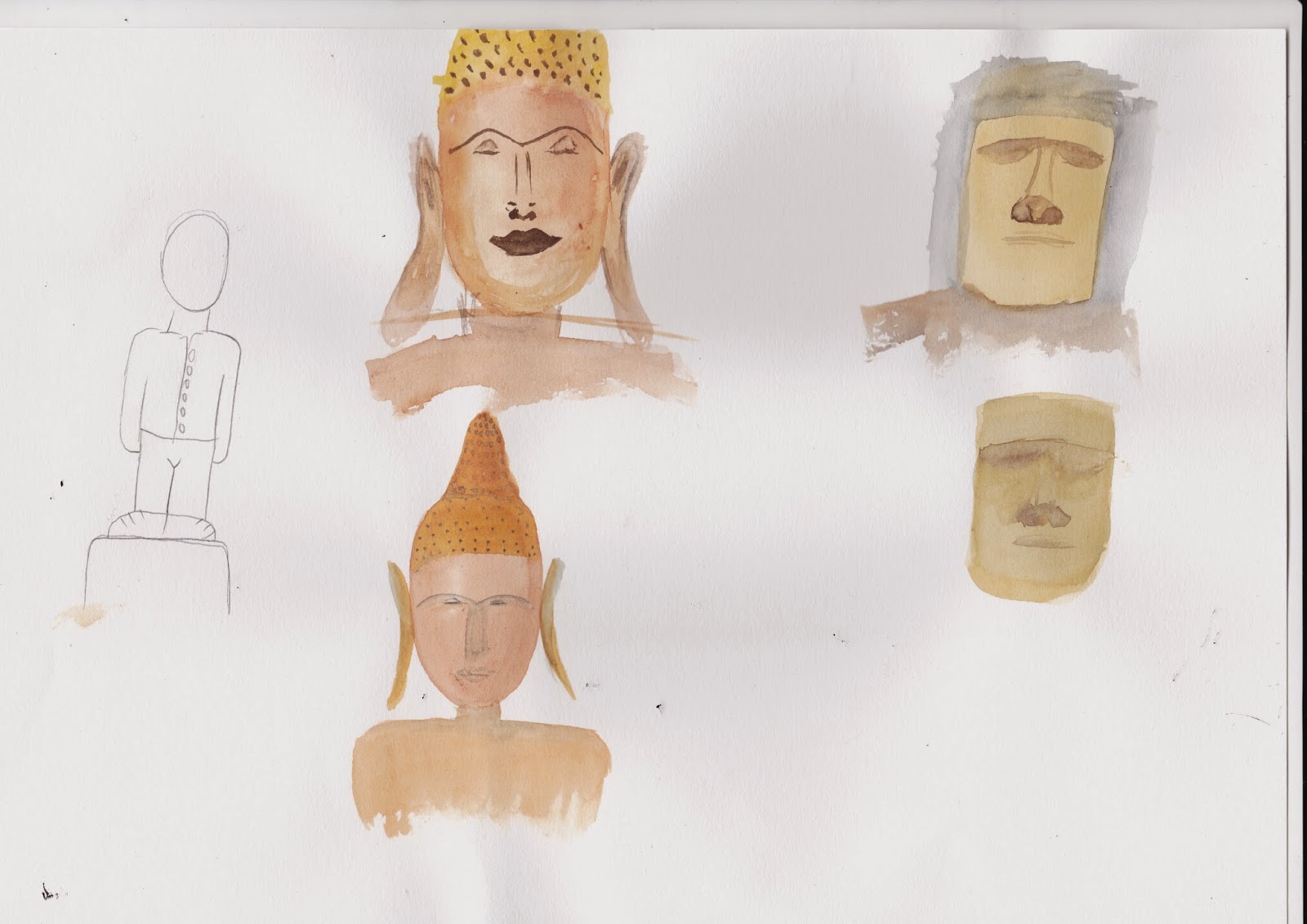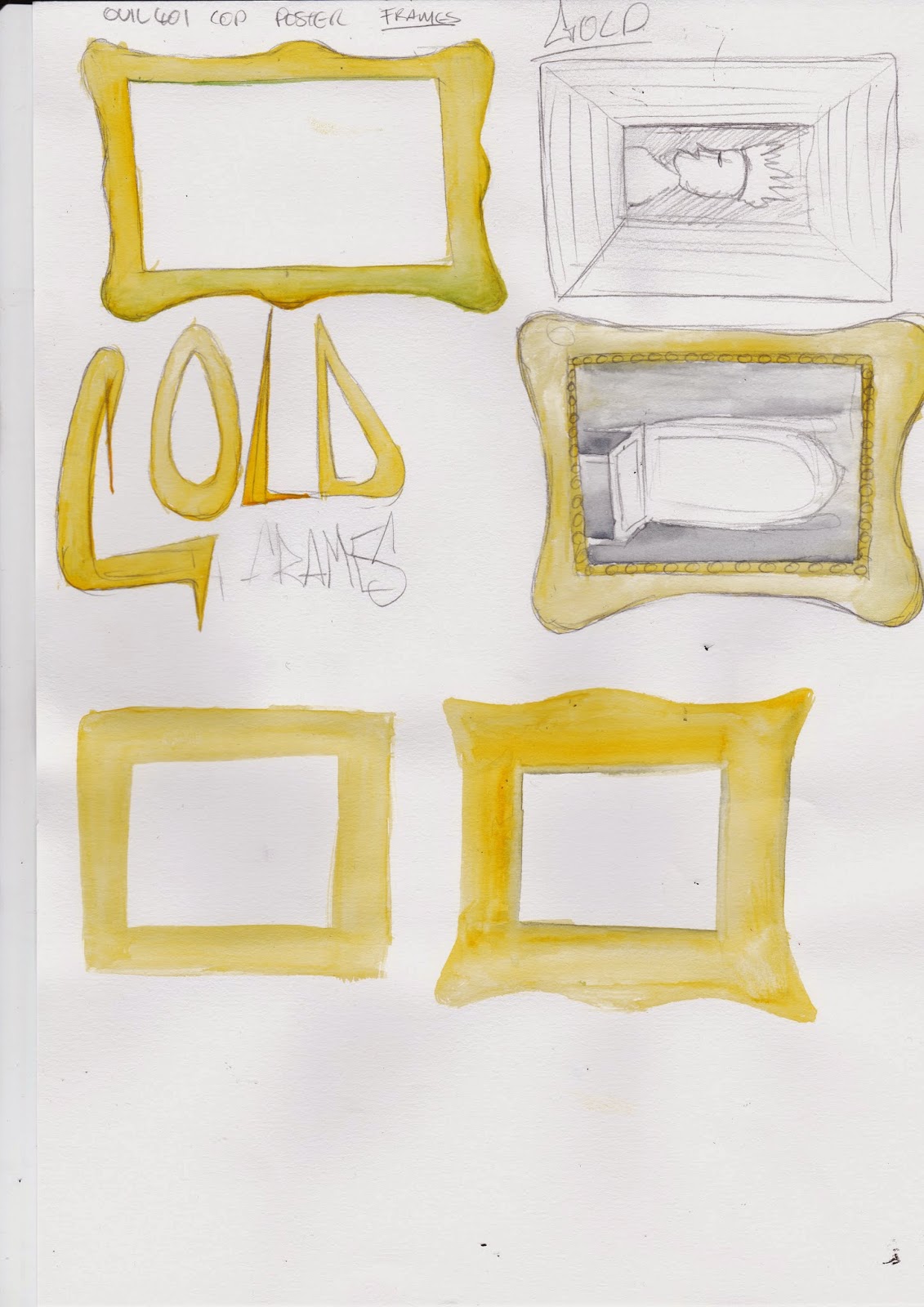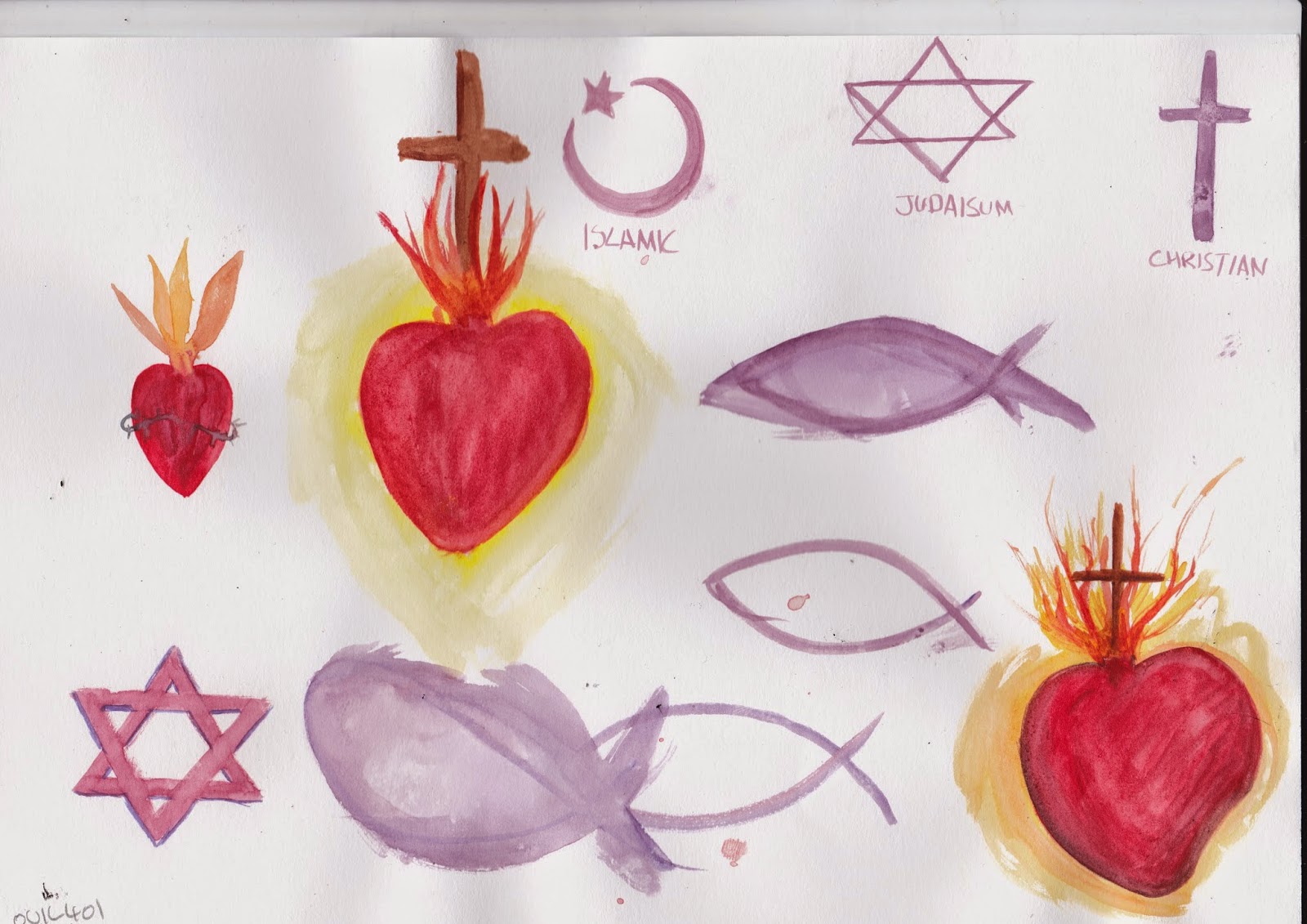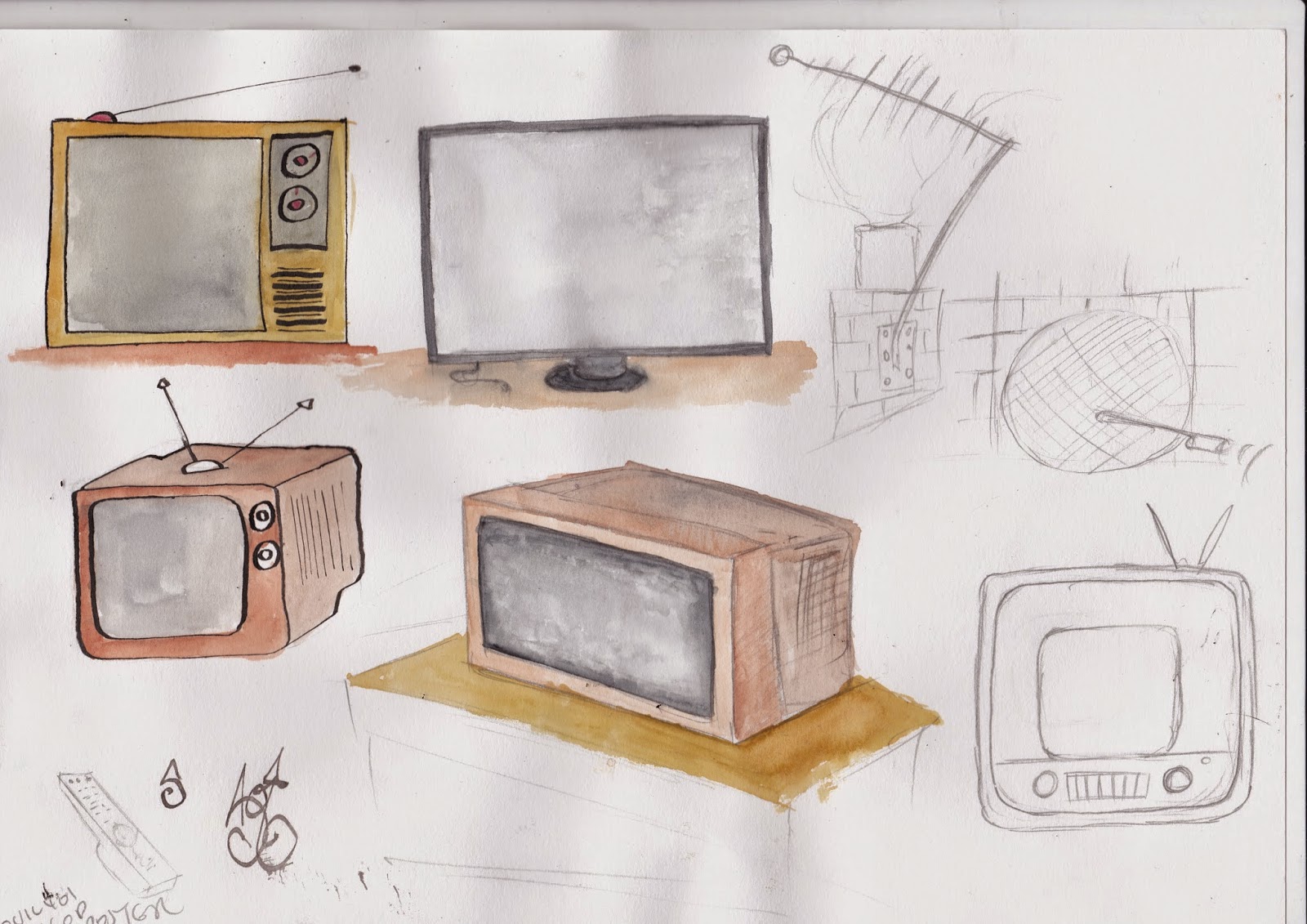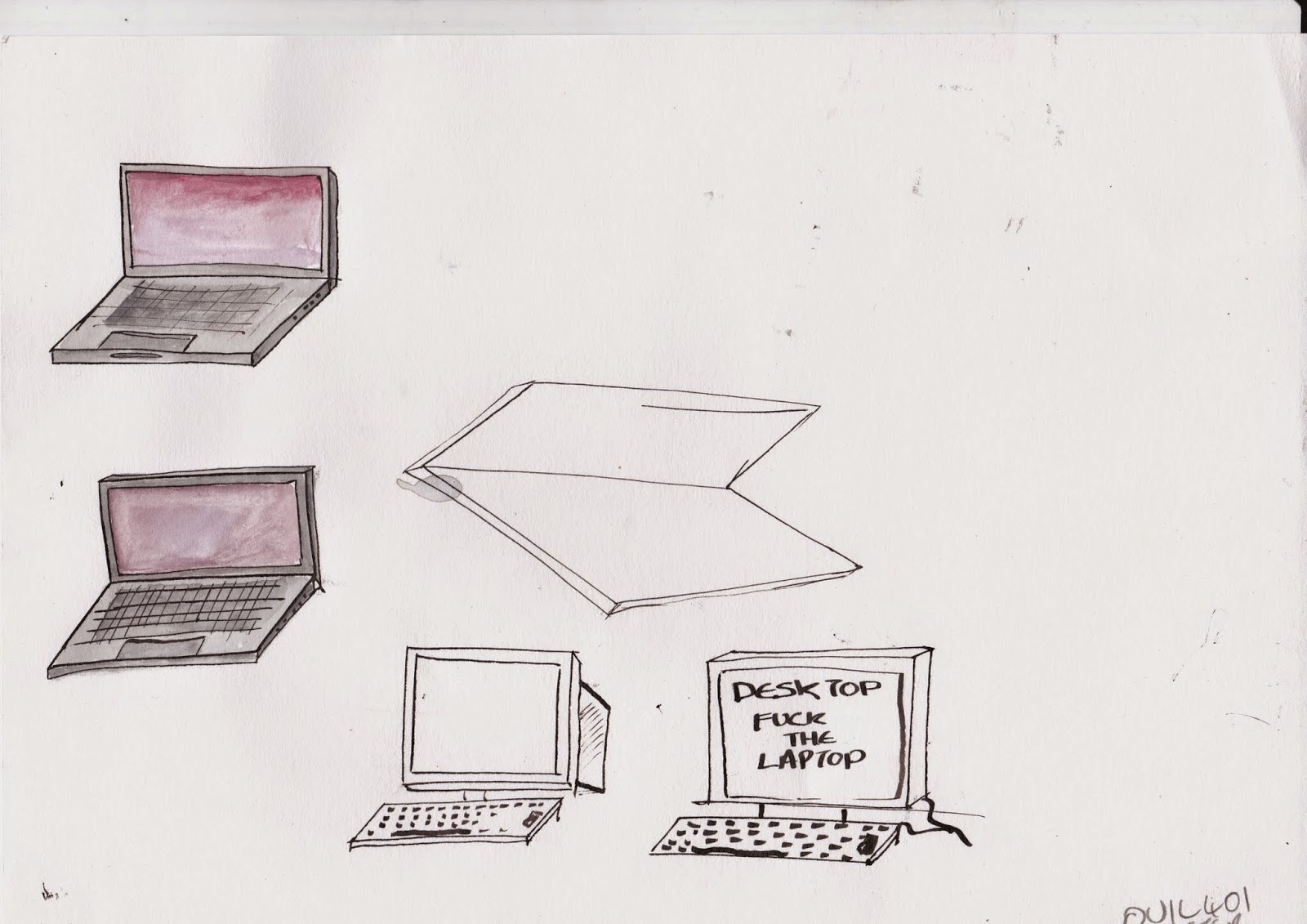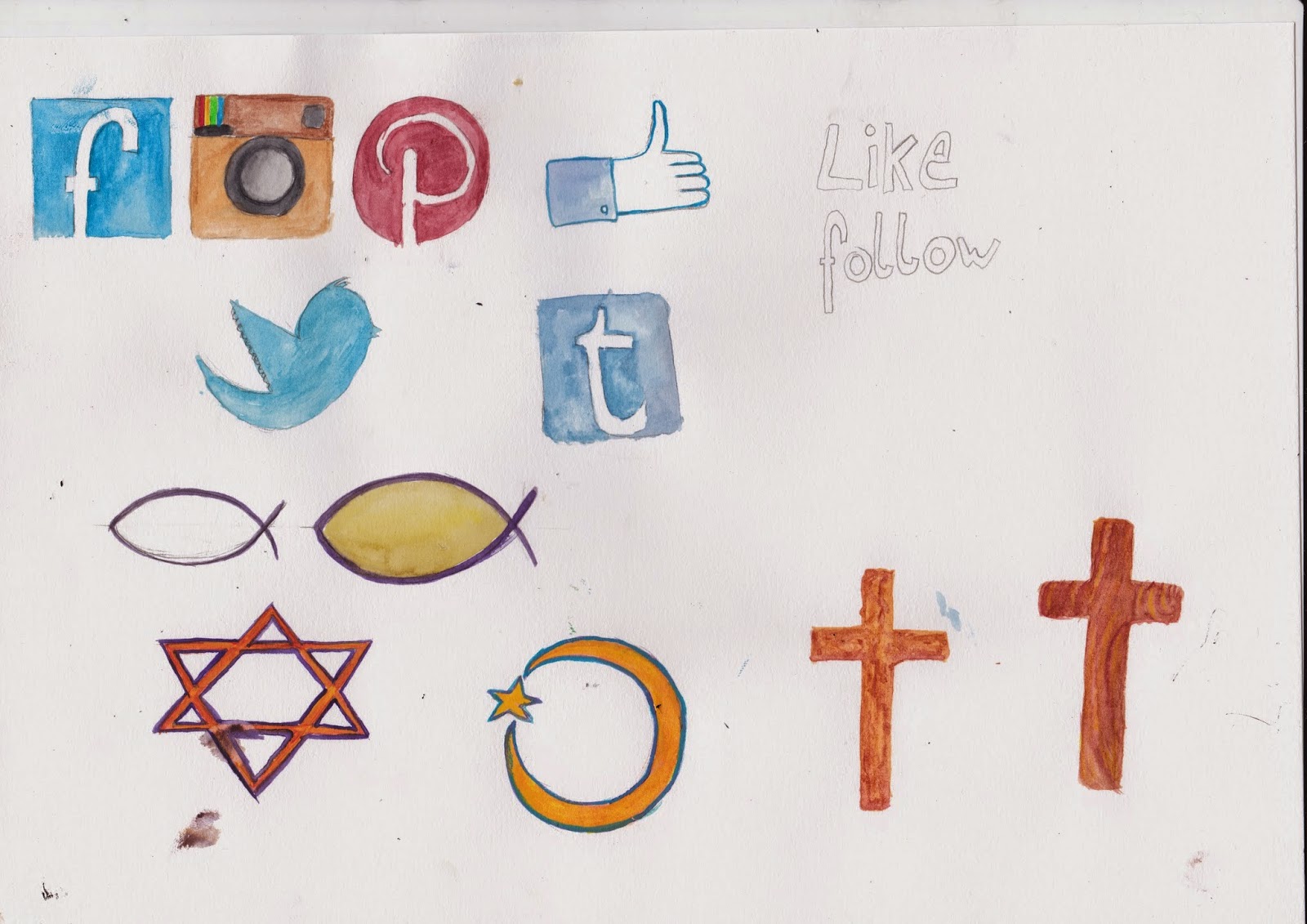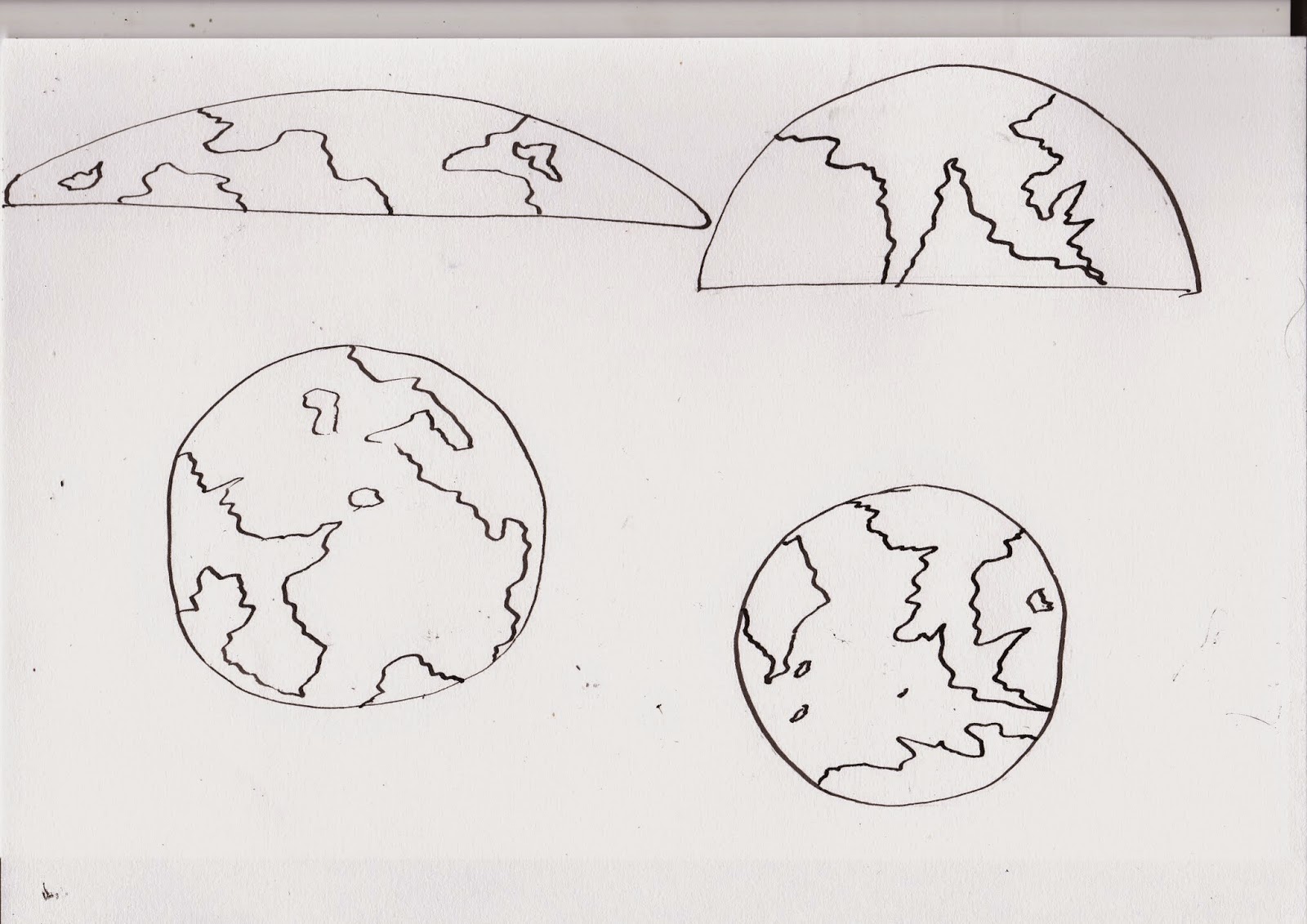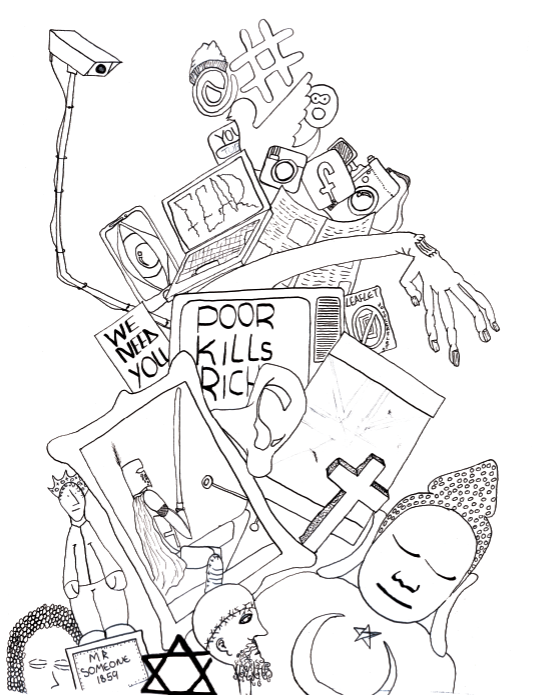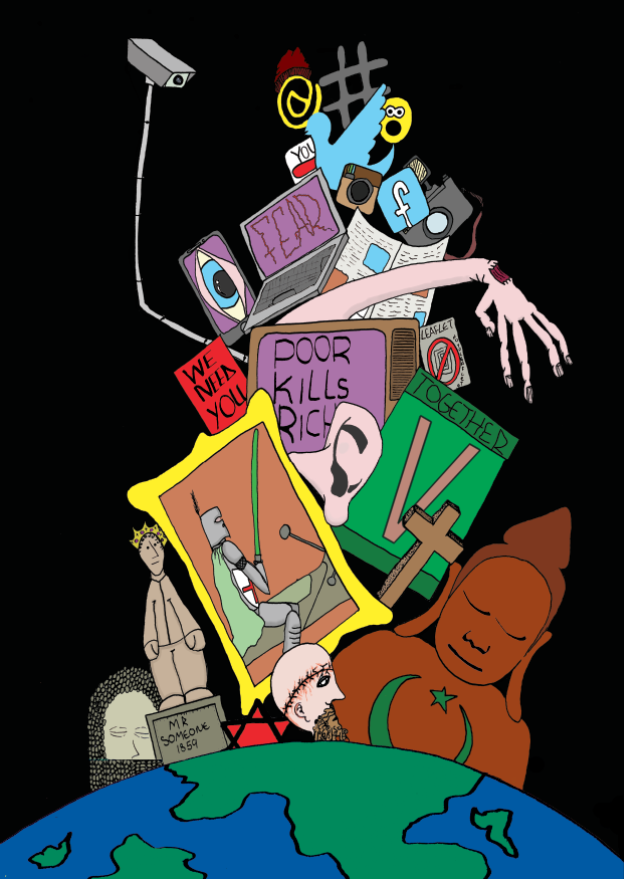Is propaganda still as widely used in today’s society? An analysis
of propaganda from world war two to present day.
This essay aims to look at whether in today’s modern world
we are still influenced by propaganda. It starts by looking at what propaganda
is. This will be followed by a discussion of how propaganda was used in world
war two and a comparison from this to today’s society. In order to understand
whether propaganda is still used to today we must first define what propaganda
is and its origin. Propaganda is not something that can be quickly or easily
defined.
The Cambridge university dictionary defines Propaganda as
‘information, ideas, opinions,
or images, often giving one part of an argument, that are broadcast, published,
or in some other way spread with the intention of influencing people’s
opinions.’ (Cambridge dictionaries, 2015)
This tells is that the aim of propaganda is not to inform
but to influence. This idea is backed up by the following quote.
‘The actual Latin stem propaganda-
conveys a sense of “that which ought to be spread”’ (World-War-2.info
2014).
The key word here
arguably might be ‘ought.’ This is because it suggests that those who spread
propaganda are deeply motivated to do so.
Harold and Lasswell write that ‘Propaganda is the
management of collective attitudes by the manipulation of significant symbols’
(1927 p627). Jowett and O’Donnell (2015) talk about propaganda as a form of
communication that uses persuasive strategies (Jowett and O’Donnell 2015 p 2). Propaganda
is used to show a message that will influence the public encouraging a specific idea or concept. This
message normally has an agenda that is to argue a case that is heavily one
sided following an ideology to influence
people. Each side of the argument uses propaganda
techniques in their favour, most of the time not telling the whole story and
heavily highlighting the areas they are focusing on to make their opponents
look weak.
When the use of propaganda emphasises purpose, the
term is associated with control and is regarded as a deliberate attempt to
alter or maintain a balance of power that is advantageous to the propagandist.
Deliberate attempt is usually linked with a clear institutional ideology and
objective.’ (Jowett and O’Donnell 2015 p 4)
Propaganda aims to control what its
target audience believes by making what they portray as the undisputed truth.
This could be based on an ideology that could be political, religious or
philosophical. (Changing works 2002-2015)
‘Propaganda, in the most neutral sense, means to disseminate or promote
particular ideas.’ (Jowett and O’Donnell 2015 p 2)
Jowett and O’Donnell (2015) give examples of how propaganda has in the
past been used to help increasing awareness about things such as disease or
road safety. Propaganda can be or
has the potential to be neutral and generally positive, examples include public
health recommendations, or signs to encouraging citizens to report crimes or
take part in an election. Now propaganda
has a very negative stigma attached to it and is often described as
manipulative. It uses selective facts, which could be seen as lying in order to
get what it wants out in the public domain. The most contemporary example of
negative propaganda is propaganda which is used to promote power of one group
over another and a very clear example of this was Second World War propaganda.
This clearly shows us the ideas of we are good; they are evil that propaganda
thrives on.
‘Propaganda can be concealed or open, emotional or containing
appeals to reason, or a combination of emotional and logical appeals.’ (American
Historical Association 2013)
In fact, it is arguable that the
emotional side of propaganda is far more powerful even than the logical appeal.
Often in fact it appears not to even have a logical basis if examined. Most
ideologies use propaganda as a way to portray their beliefs as the true one
whilst also suggesting that other believes are false, bad and even evil. The very nature of propaganda is that it is
hidden, therefore what people believe is that what is said has to be truth.
(Changing works 2002-2015)
‘The subject matter just becomes what is normal and
the communicator of the message is not perceived as trying to persuade or
manipulate.’ (Changing works 2002-2015)
When it becomes ‘normal’ it as its most dangerous- we stop questioning
it. Often it is aimed at people’s
emotions rather than rational thoughts, in order to get a greater result. For
example once the public have be told “true” horrors of war this makes them feel
saddened which further imbeds theses facts in the person. These facts where not
seen as lies, but were instead accepted by the public. There are many different
techniques used in propaganda such as
Appeal to fear, Appeal to
prejudice, Bandwagon,
Euphoria,
Stereotyping or Name Calling or Labelling, Card stacking, Testimonial and Plain folks
just to name a few. (projectgutenburg,
2015)
It is discussed that in order for
propaganda to have the desired effect the communicator needs to be a body or
person that has a significant amount of power or control over communication
through the mass media that reaches their target group. (Changing works
2002-2015). Using the specific example of world war two we can see clearly where
propaganda is believed to have been a central focus. WW2 is not the first or
only example of powerful propaganda use. Records show that we
have been using propaganda since 16th century to win arguments.
Propaganda
in this form was introduced in the First World War by journalist Walter Lippman
and psychologist Edward Bernays. There was an attempt to sway public and official opinions for the
United States to join the war and to support the British. This only took 6
months for them to produce a campaign that saw intense anti-German hysteria
sweep the nation. Observing the success
of propaganda as a weapon in war, Hitler saw a great potential for controlling
the public on a grand scale, which he put in to effect during the Second World
War.
Propaganda in Germany was produced by The
Ministry for Public Enlightenment and Propaganda, Joseph Goebbels (a German politician and Reich Minister of
Propaganda) was the man placed in charge here.
The German military and ruling bodies believed heavily in the use of Propaganda
as a tool to win the war, as they saw in the First World War how effective the allies’
campaign had worked against them. So for this to work the Nazis took control of
all media outlets and any stories that were to be published or broadcast had to
have prior approval.
‘As well as
generating information and encouragement the MoI was charged with protecting
national security by controlling news and information produced by others.’
(Gardiner 2004 p132)
This is the first
sign of propaganda as ideology and not as information is when the means of
control are taken over. They even went as far as to try their propaganda on the
international stage by trying to tell the people of France and Great Britain
that they had no quarrels with the people but their governments where trying to
go to war with the Germans and they had no choice but to fight back.
(World-War-2.info 2014)
In World War 2 propaganda was used as away to belittle
opponents to create a desired affected. Often spreading hatred of the opponents
within the community and uniting them in a collective based on fear. The idea
was then to rally support, encouraging a belief in the cause in order to get
people to behave in a certain way; proposing positive things whilst hiding what
was really happening. This was done using a variety of propaganda techniques
many of which were also been used by the enemies to get support from their
people to believe in what their leaders were doing was right for them. By using
imagery and slogans that would influence everyday people they were able to
rally support across the country. This also had an impact internationally as
many of the posters where featured in national newspapers which where
distributed around the world. So the rest of the world was also a victim of our
propaganda.
Many of the posters stirred emotions in
the public, which encouraged them to become more patriotic, the aim being to
push more civilians to play their part and become fighters of the cause. In the
World Wars this meant to take up arms and fight, or just simply demoralise the
opposition to stir up the patriotism in everyone. In order to do this images of the normal average
everyday workingman were used in the papers so people would feel like they
related to the poster. (Laughey 2007)
See Image 1
http://www.nationalarchives.gov.uk/theartofwar/prop/home_front/INF3_0114.htm
This
World War Two poster is a clear example of the British government telling the
public it is down to what they do that will make the difference in the war. The
“A.T.S” stands for the Auxiliary territorial Service that was a women’s section
of the British army. It is clear to see that the poster in appendix 1 was used
to pursued the British women to too sign up and take up they roll in defending
they beloved country against the Germans and with they support the war would be
won.
‘Posters that talked
down to people by insisting ‘Your courage, Your cheerfulness, Your resolution
will bring us victory’ or by inventing a series of irritating characters such
as ‘Miss Leaky Mouth’, ‘Miss Teacup Whisper’ and ‘Mr Glumpot’ to warn against
the dangers of rumour.’ (Gardiner 2004 p130)
A lot of these could be interpreted as stopping people from
asking questions or complaining about their situations as according to the
posters it was the whole country’s issue and we all needed to put this first
before our own problems. These types of messages where sent from our own
government to manipulate anyone and everyone into playing a role to win the war
no matter who you were. Back in World War 2 people thought that the government, newspapers and
radio would not deliberately lie to them and they honestly believed that the
printed word in a newspaper or spoken word on the radio was the truth.
This made it extremely easy for the government to influence the public and
in turn gain support during the war based on what they had read or heard
through the media. The British government realised that
in order to keep the public on-board and in favour of the war they needed to
keep public moral high. If morale was high it would mean things were working
effectively. Morale was measured through mass observation, which was particularly,
useful during specific events such as by elections. Morale was important to
ensure the public did what the government wanted and didn’t become alarmed and
ask too many questions. With low morale people would stop believing in the
cause, people wouldn’t want to sign up to be part of the war.
The morale meant they had faith in it that
they would sign up and comply. They were shown images, which were very
patriotic. These told them what to do but without a real understanding of why
they were doing it just it was in the country’s best interest for winning the
war. If people didn’t do what was best for the country then they were
persecuted and ridiculed, so to save embarrassment people just did what needed to
be done in order to make their contribution.
It is interesting to compare British
propaganda with some of the German ideologically motivated propaganda of the
day…
This shows the power of appeals to
guilt and to duty and to fear- 3 things which propaganda thrives on.
Propaganda in present day
In todays 21st century world
we think we have moved on from the times of the First and Second World Wars, we
believe that our governments have progressed into the 21st century
but are we really any more advanced when it comes to noticing the use of
propaganda on us. Laughey suggests that
‘propaganda continues
to play a central role in todays military and political affairs, not least in
the ‘War in Terror’.’ (Laughey 2007 P11)
An example of this can be seen in the
2003 invasion of Iraq, as Press and William suggest in in the quote below.
‘The effect of
propaganda can be as profound as it was in Lasswells examination of propaganda
in World War 1” (Press & William 2010 p79)
The two wars in Iraq were both started
when the governments of the allied forces started tell tales of horrendous
atrocities committed against the people in the country and surrounding areas.
Once theses stories surfaced and the media got hold of them and they were
everywhere for everyone to see. Because these stories are sometimes backed up
by testimonials of those whom apparently where there we don’t question them. The
main function of propaganda is through the use of the media, which is able to paint
pictures of the world in our minds using they words and views. The public are
dependent on the press for the source of its political opinion.
Some of the stories that lead to these
wars starting turned out to be dubious influenced like the The Nayirah testimony that turned
out to be a very real case of modern propaganda. Without this very real case of
a false story was used to spread hate and fear to the world the first gulf war
may not have happened. This story was headline news and got the public of many
nations to support the efforts to remove the “evil” that had committed these
crimes. A key finding of this essay is the following quote
‘Truth and the news are not the same
thing’ (Press & William 2010 p70)
It is very difficult for individuals
and institutions to comprehend why the news corporations would lie to us. The
greatest power of propaganda is through the control of media and to control
what is broadcast/print or discussed. Propaganda is often described as
‘A theory of hegemony
in which news reporting tends to be sympathetic to government policies and
corporate decisions and at the same time tends to marginalise dissenting
voices.’(Laughey 2007 P204)
Over the years there has been lots of
discussions around the influence media has on people and many theories around
this have been created. A countries greatest weapon is their public’s opinion
and by controlling this via the media it can be a great tool to have and use in
times of conflict. (Laughey 2007) We are
bombarded with propaganda all the time it would seem but it’s just whether or
not we all take note of it and react to what we are told. Some of the time the
stories appear so farfetched that it’s hard to even give it a second read or
believe much of it to be true.
In recent years it has been the west
that has been the users of worldwide propaganda in particular The Bush Administration. When George W
Bush was in power it seemed that America was scared by the whole world
including they own citizen but in particular the Middle East got the full force
of they fears. Through the use of the “War On Terror” they worked their way
through Afghanistan, Iraq, Yemen, Pakistan and later on Libya offering only
selective information to the public, which would encourage support of the need
for war. Propaganda as described before is often the deliberate use of
selective facts to rally support, which is exactly what happened here. What influenced
these decisions were the 9/11 attacks in America these produced some of the
worst scenes broadcast all over the media all around the world. From then on we
where fed story after story about Al-Qaeda and they leader Osama
bin Laden, this somehow lead to 29 country’s
going to war with the extremists in Afghanistan and take down their government
and try restore order to the country.
Then not long after this they turned
they attention to Iraq and Saddam Hussein as they believed that he was hiding
very large quantities of weapons of mass destruction that the whole world
should fear and take action straight away. This war was not in the public’s
opinion a good idea. There was no evidence shown to back this up, as it turned
out after years of 1000s of service women and men from all over the world losing
they lives for this campaign there never was any weapons of mass destruction
ever found and was very clear to the world it was all about oil and profits to
be made from it.
See image 2
In the modern army of today they only
need to use a few words to encourage young women and men to sign up. Just by
saying BE THE BEST applies that you
will be the best if you join them. Like the recruitment posters in the second
world war this is more like a slogan that can be attached to a recruitment
poster or it can be simple be used on its own. The Union Jack flag is clear and
tops the text taking pride of place in letting people know who exactly they
are.
In todays society there is a fine line
between propaganda and publicity. (Laughey 2007)
- censorship automatically creates control over the media
Based on the research gathered from this essay I must
conclude that propaganda is still very much used in today’s society. But for
some reason even though we have the tools such as the Internet as much news as
possible? to do our own research and look at many sources for the news we still
depend on the big corporations to deliver the news to us. But these big
corporations are only interested in sales and getting the most amounts of views
on the TV, so they cannot be relied on to tell us the truth as most of the time
the truth does not sell but a story loosely based on nonsense facts does.
I feel that we are much more prone to be exposed to
propaganda in todays world as we live in a society that is built and ruled by
profit, and they is not much profit in telling the true story’s instead we are
engulfed in speculation and assumptions. Back in the days of World War Two
Propaganda was used to sir up support to win a war that was been fought on our
own front door step. Today it seems to be used to spread fear and hatred with
no true cause to speak of. So it would appear that propaganda today far out
weights the use of propaganda back in the 1940s and is not just a factor of war
but also a factor of everyday life.
Today’s army don’t really have to rally up support for them
to go to war as this is done for them via politicians and the media. The recent
government sponsored advertising campaigns are proof of this. They only use
campaign poster s when it coms to recruiting new young women and men, this is
done by glorifying the army in what it does for training for war also the
efforts of on-going support it goes around the world to help the people and
place in need of man power. Most of the
time its not printed campaigns in news papers although these are still used
most of it is done on TV adverts which are done very well in making the army
seem like a great job opportunity that comes with some fantastic benefits like
skills for life that you will be able to continue to use once you leave the
armed forces. But more importantly it will make you go from boy to man.
So it’s fair to say that from the days of belittling your
enemy to recruit it is now about making the people who do sign up feel like
they are the better person for what they are doing, and the rest of us public
should honour these people as they are the hero’s that we need to keep us safe.
Even though these people sign up voluntarily to do their job they must be
treated with the upmost respect like the men that were forced to go to war.
This essay set out to ask is propaganda still as widely used
in today’s society. It has explored the period from WW2 to the present day. In
summary it could be argued that the media bombardment we tend to experience is
actually a good way to express what might be called propaganda. Arguably it is
alive and well but just a lot more subtle.
Bibliography
Gardiner, J. (2004) Wartime Britain
1939-1945. Headline Book Publishing. London
Jowett, G and O’Donnell, V (2015)
Propaganda and Persuasion. 6th edition. Sage, London.
Lasswell, H. (1927).
The Theory of Political Propaganda. . American Political Science Review, 21, pp
627-631. doi:10.2307/1945515.
Laughey, D (2007) Key Themes in Media
Theory. Open University Press England
Press, A and William, B (2010) The New
Media Environment An Introduction,
Wiley-Blackwell.UK
Image
1
Image 2



